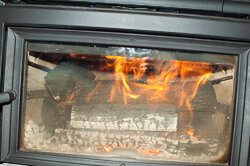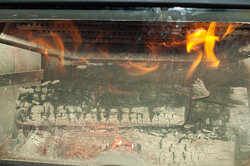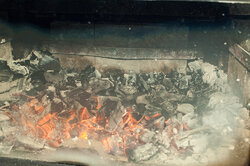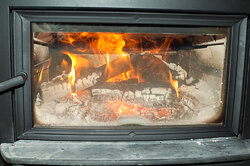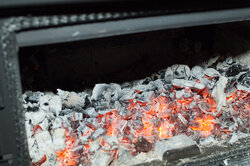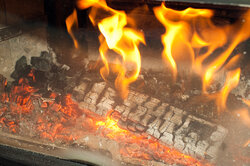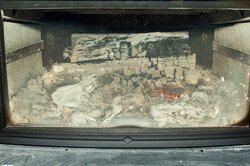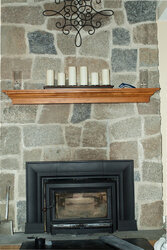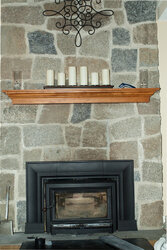Not that this is much help right now, but I'm going through a similar thing this winter with a stove I've been using for 6+ years. What happened to me, is that the wood I'm burning this year, just so happened to all be a collection of logs that split so easily, that I wound up splitting them down smaller than normal.
Usually, I'm stuck with a much larger quantity of "ugly" wood, with nearly impenetrable knots, etc, that keeps a good percentage of my splits much larger than what I have to work with this year.
The only thing different this year compared to others is the size of my splits, and I too am getting more coaling than I'm used to. In the future, I will keep a larger percentage of the wood, even if it is splitting well, in bigger chunks.
With the bigger chunks, I can keep the air open a tad bit more and not have the stove overheat in the early stage of the game as I'm experiencing now. With the primary air open more, the stove's natural movement of air means less secondary air if the primary is allowed to breathe a bit. That said, I have helped resolve my problem by using the flue damper quite a bit.
With that, I have a free stander, and have good access to the pipe and damper which is why I use it. If I were in your boots, I'd be looking to restrict secondary air so that hopefully you can do the same,,, leave the primary air open a bit more and let that help you burn the coals down, since you don't have the flue damper option.
Supper is ready and am short on time to check out the docs you posted now, but plan to look at what you shared after, and hope some others do too.
We're with ya, you have a good stove, it just needs tuning.
pen


